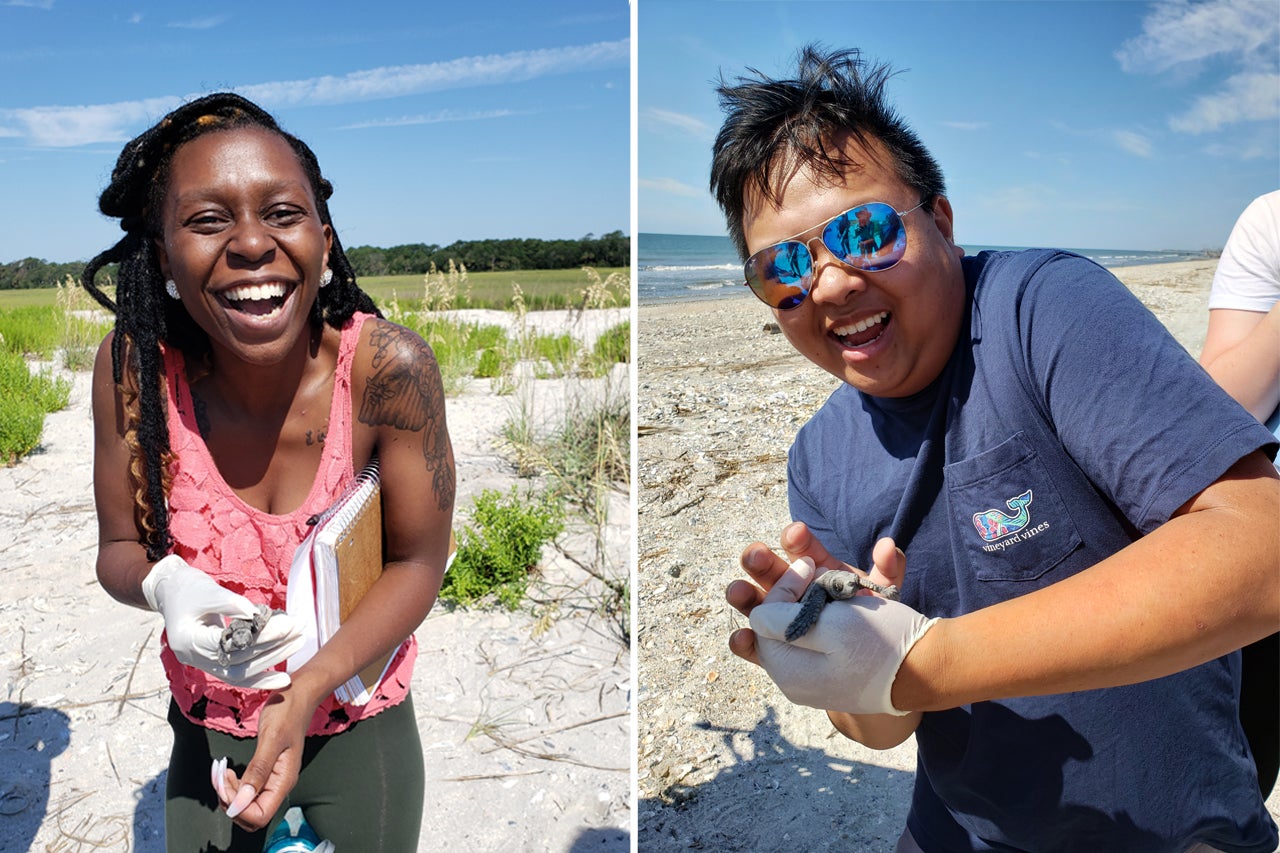If you live along the coast, you know that this region abounds with aquatic species. That’s one of the most alluring aspects of living in Charleston, South Carolina. In the Lowcountry, you’re apt to see dolphins, myriad species of fish, a variety of crabs, bivalves, aquatic birds and occasionally, turtles.
Aquatic turtles are the animals that most fascinate Ashley Lavender. She’s an adjunct professor in environmental and sustainability studies and biology, as well as the associate director and internship coordinator for the College’s Office of Sustainability.
For the past two summers, Lavender has been teaching a course she developed called Aquatic Turtle Conservation and Biology.
“I’m passionate about aquatic turtle biology,” she explains. “I developed this course in part because I knew that the topic would appeal to students. Many of the animals we study live just off South Carolina’s coast and nest on our beaches or live in our waterways. In addition, the loggerhead sea turtle is the official reptile of South Carolina. In fact, we’re just now at the end of the nesting season for this species.”
Lavender designed this course to be a sustainability-focused option for students, which helps to support the goals of the College’s Quality Enhancement Plan, which focuses on sustainability literacy as a bridge for addressing 21st-century problems.
“It has a local emphasis – we study loggerhead turtles and other turtle species found here – but we do that within a global context,” she says. “Understanding the biology of this species is essential to devising effective management plans. And given that the loggerhead is protected under the Endangered Species Act, the students learn how that’s administered at both the state and federal levels, primarily through nesting beach monitoring programs.”
To offer an example of how sustainability is encompassed in her lessons, Lavender cited one dynamic of sea turtles that she and her colleagues are studying.
“It’s well documented that sea turtles exhibit temperature-dependent sex determination,” she explains, “so with rising ambient temperatures borne of climate change, we’re concerned that the sex ratio will eventually skew female. This relates to higher nest chamber temperatures, which lead to a higher percentage of female hatchlings. Ultimately, that could have an impact on the survival of global loggerhead sea turtle populations long term.”
For both Lavender and her students, a highlight of the course was the time they spent outside the classroom. For field labs this summer, they traveled to the South Carolina Aquarium, the Turtle Survival Center in Cross, S.C., the beach at Botany Bay on Edisto Island, and the College’s own Grice Marine Laboratory to experience native and non-native turtle species in the wild and in captivity.
“We learned about sea turtle rehabilitation at the South Carolina Aquarium and learned about captive management strategies at the Turtle Survival Center,” she says. “We partnered with researchers from the South Carolina Department of Natural Resources at Botany Bay where the students actually got to hold loggerhead sea turtle hatchlings that had just emerged from their nests. And we kayaked through the marsh areas around Grice Marine Lab. Each of these trips was really impactful for the students.”
One of Lavender’s goals in this course is to present ways her students can engage with the species they’re studying during the periods of peak activity for those animals.
“I wanted my students to see these animals in the wild,” she says, “but I also wanted them to see the professionals working in this field and observe what they do. Doing this can really augment what the students are learning and make it more relevant to their own lives.”
Lavender says that she also consciously tries to allow her students the opportunity to see issues of environmental sustainability from an optimistic standpoint.
“These students are too often bombarded by the negative side of things in this field,” she says. “So, I develop classes that will give them the basic information regarding particular issues and the complexities involved, and we’ll discuss the important points to consider, but after doing that, I focus on points of intervention. We consistently discuss the ways that students can make a difference addressing these issues through direct and indirect action. It’s important to keep the bigger picture in mind of how students can apply this knowledge in their own lives.”
Aquatic Turtle Conservation and Biology will be offered again during Summer Session II 2020.
Featured image: Recent graduates Charmaine Littlejohn ’19 (left) and Cam Nguyen ’19 (right), both students in the course Aquatic Turtle Conservation and Biology, hold loggerhead sea turtle hatchlings on a visit to Botany Bay on Edisto Island. All research and handling were done with proper permits and permission from SCDNR. Sea turtles are federally protected under the Endangered Species Act.




